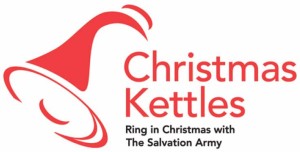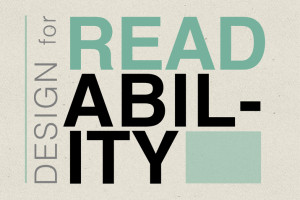No one can predict how the future will shake out, but global design and strategy firm Frog is making some educated guesses for 2017.
Last year, the firm correctly predicted that virtual reality would explode in popularity and that sensors in things like appliances and thermometers would continue to shrink in size.
Buildings will harness the powers of nature.
Around the world, large companies are leading the way in building solar-powered offices that don’t rely on fossil fuels. Frog strategist Agnes Pyrchla expects the trend to continue in 2017. “Taking a nod from natural patterns,” she writes, “material scientists and architects have developed bricks with bacteria, made cement that captures carbon dioxide and created building cooling systems using nothing but the available wind and our vibrant sun.”
Business bots are going to be huge.
In the way the communication app Slack has merged bots into its chat service, frog strategist Toshi Mogi believes entrepreneurs will use artificial intelligence to handle the logistics of running a business. “The entrepreneur will commission an assortment of business bots to bring their vision to reality,” Mogi says.
He uses the example of selling high-tech skateboards. A research and development bot might automatically solicit designs from freelancers, while a sales and marketing bot polishes the online e-commerce platform — all to help the business owner work faster and more precisely.
Synthetic food will be in every grocery store.
Designer Andrea Markdalen sees two big changes in store for food. The first is that plant-based proteins will gain popularity as a replacement for slaughtering live animals. The second is that tissues drawn painlessly from live animals will be engineered to create synthetic, lab-grown food. “In 2017, we’ll see a broad range of new plant-based meat replacements at your local grocery store,” Markdalen writes. “They will extend well beyond the vegan aisle, where most are currently relegated, and they will taste better than ever.”
Virtual reality will take over sporting events and concerts.
Instead of shelling out hundreds of dollars for a Kanye West concert in 2017, Piet Aukeman and Sonny King say virtual reality will finally make its mark in home entertainment. Venues will be able to livestream entire shows for people who want to watch without leaving their living room. NextVR is already partnering with Live Nation to make the setup a (non-virtual) reality. “For those consumers that lack the VR hardware,” they write, “the community can provide ‘VR Stations’ in malls, transportation terminals, and open spaces.”
Sensors in important spaces could save us lots of headaches.
All types of rooms — living rooms, retail floors, hospital bays — will come embedded with sensors, say Chad Lundberg and Jud Holliday. These sensors will pick up information on usage patterns at different times of day, in different noise environments and in different temperatures. Companies like Vivint already produce security systems that work in a similar way. Vivint’s Smart Home technology bundles security cameras with locks and thermostats, allowing it to both keep people safe and know when to save energy.
“Spaces will no longer simply house and support your activities,” Lundberg and Holliday write. “They will participate.”
Autonomous vehicles will get a whole lot smarter.
With Tesla and Uber both vying to break into (really, create) the driverless car industry, frog creative director Matt Conway thinks we’re not far from autonomous vehicles saving us from ourselves. With the right technology, multiple cars could “talk” to one another and reduce the chance for crashes. An emergency maneuver like running a red light to avoid getting rear-ended “might seem reckless if it was taken by a human,” Conway says, but because autonomous cars could work together, that measure could be “as reasonable and life-preserving as any taken by a professional body guard.”
Virtual reality will be used as part of therapy.
VR as therapy is something of a repeat from frog’s 2016 list; only this year, the company expects it will become so immersive that it could rewire people’s brains. There is already research that shows VR can help people overcome their fears and PTSD. Designer Kyle Wolf suspects the technology move into rehab for physical brain injuries as well. “Mindmaze, a pioneer in this space, is already creating virtual environments for stroke patients,” Wolf says, “causing their brains to re-wire themselves and re-establish mobility in forgotten limbs.”
Doctors will have huge data sets to make medicine more precise.
Precision medicine — the practice of tailoring treatments to each patient’s unique case — is incredibly hard. It takes fine-toothed data that most hospitals simply don’t have. In the future, as medical records become entirely digitized and uniform between facilities, strategy director Allison Green-Schoop believes precision medicine will only improve. Doctors will be able to look up much more local data, such as water quality in your zip code, to gain insight into a disease’s source, not just its symptoms.
Sounds will hold our attention like never before.
For the last 30 years, humans have interacted with their technology through screens, which rely primarily on imagery and visual cues. But creative director Christine Todorovich sees a future in which sounds start playing a much larger role. Instead of controlling your cooking device by manually selection options in an iPad app, you might be able to articulate commands openly in your kitchen. Companies like Here One already try to help people personalize their sonic experiences. “The combination of screen fatigue and technology embedded in everything from cars to homes, is exposing a need for new types of interfaces that extend beyond the visual,” Todorovich says.
Drones will assist in humanitarian work.
Drones are great for much more than stylized movie shots. Designer Lilian Tse cites efforts in Rwanda, where a drone airport facilitates medical deliveries to people in need, as clear evidence that humanitarian aid is their best use. “The definition of a drone is ‘unmanned aircraft,'” she writes, “but behind the unmanned aircraft is a person driving the intention and potential of what the aircraft can do for people in need.”
This year, Tse says we’ll see more people move into that service.
Machine learning will teach us about ourselves.
When Google’s robot, AlphaGo, beat a human player in the ancient Chinese game Go, artificial intelligence experts cheered. It was a giant leap forward in the field of machine learning. But frog senior strategist Rebecca Blum says AlphaGo also taught expert Go players how to play the game better. They learned from the machine’s own learning. According to Blum, machines can help us understand ourselves in a variety of ways. Algorithms that automatically write prose might teach us about creating writing. Scientists could continue learning about the brain based on how complex neural networks store new information.






